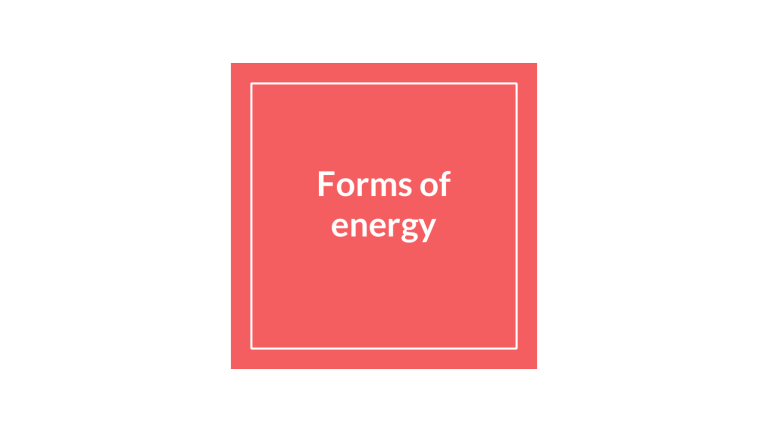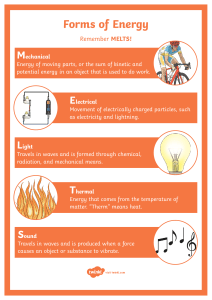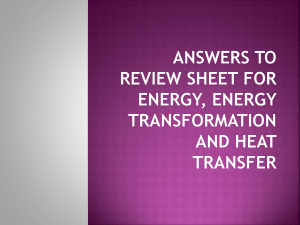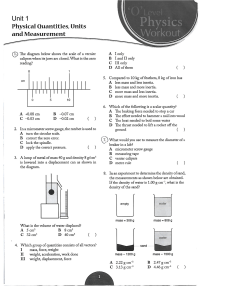
Forms of energy Forms of energy Objects have energy and can gain energy from or lose energy to other objects. A moving car has energy, a pot of water heating on a burner is gaining energy from the burner, and a bowling ball loses energy as it hits the pins. Energy forms are either potential or kinetic. Potential energy comes in forms that are stored including chemical, gravitational, mechanical, and nuclear. Kinetic energy forms are doing work like electrical, thermal, light, motion, and sound. Though each form is different, they are all the same in the fact that one form of energy can change into another. Energy can be changed from one form to another, but excluding nuclear processes, it can never be created or destroyed. Solve a couple of these fun riddles!! 5 basic forms Watch the video Mechanical energy is the sum of kinetic and potential energy in an object that is used to do work. In other words, it is energy in an object due to its motion or position, or both. Electrical energy can be used to move charged particles through a wire from a power plant to our homes and businesses. The movement of a charged particle through a wire is called current, or more commonly, electricity. Electricity is used to work various appliances in our homes. Light energy is carried in light waves. Most objects don't emit visible light, but reflect from other sources. Our primary source of light is the sun. Thermal energy is the random motion of molecules. molecules in matter are always in motion, but the hotter something is the faster the molecules move. Temperature is a measure of that motion. Sound energy is carried through sound waves. Sound waves carry energy through air or other materials as the molecules in them are pushed and pulled by a vibrating source. All sounds begin when something vibrates.







